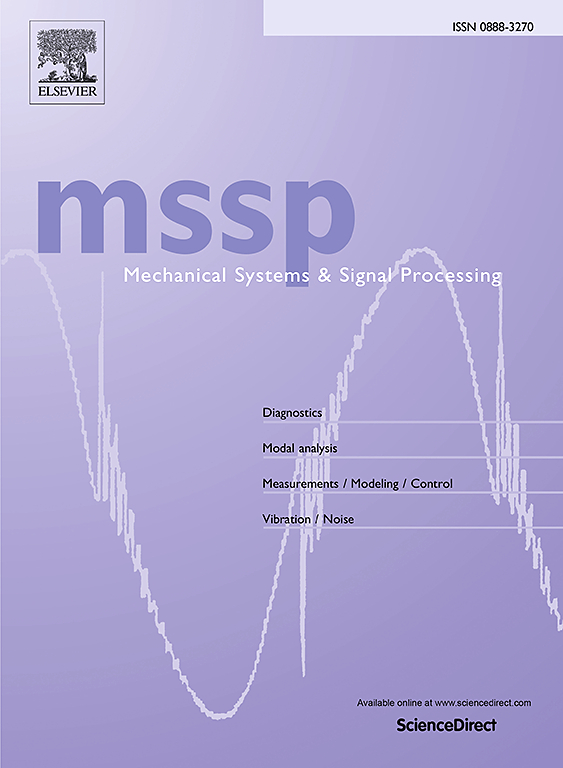Nonlinear vibration characteristics of turnout rails: Simulation and advanced nonlinear modal testing
IF 7.9
1区 工程技术
Q1 ENGINEERING, MECHANICAL
引用次数: 0
Abstract
The boundary conditions of turnout rails are complex, involving three types of constraints: double-sided fastening (ordinary rails), single-sided fastening (stock rails), and without fasteners (switch rails). This paper presents a systematic investigation of the nonlinear vibration characteristics of turnout rails using a combination of simulation and experimental approaches. The simulation phase utilized transient dynamics analysis to explore nonlinear behaviour, which was then validated through experimental testing with an advanced nonlinear modal testing method. This method combines response amplitude linearization theory with the hammer test technique. The key innovation of this testing method is the use of a single hammer impact for nonlinear modal testing. The method generates an FRF matrix at varying impact amplitudes, enabling quantitative analysis of nonlinear characteristics across different load levels. By combining a new coherence function algorithm with traditional algorithms, the data reliability is ensured. It does not require specialized loading equipment, significantly improving experimental convenience and making it particularly suitable for field testing in engineering applications. Both simulation and experimental results consistently show that turnout rails exhibit nonlinear vibration characteristics, especially below 100 Hz. These characteristics include amplitude dependence, softening nonlinear effects, and inertial effects at low frequencies. Rails with double-sided fastening exhibit weak nonlinearity, noticeable only when the excitation amplitude exceeds 31 kN. In contrast, rails without fasteners show the strongest nonlinearity, making them the most easily excited. The research in this paper offers insights for identifying and quantifying nonlinear characteristics in large engineering structures under complex scenarios.
求助全文
约1分钟内获得全文
求助全文
来源期刊

Mechanical Systems and Signal Processing
工程技术-工程:机械
CiteScore
14.80
自引率
13.10%
发文量
1183
审稿时长
5.4 months
期刊介绍:
Journal Name: Mechanical Systems and Signal Processing (MSSP)
Interdisciplinary Focus:
Mechanical, Aerospace, and Civil Engineering
Purpose:Reporting scientific advancements of the highest quality
Arising from new techniques in sensing, instrumentation, signal processing, modelling, and control of dynamic systems
 求助内容:
求助内容: 应助结果提醒方式:
应助结果提醒方式:


